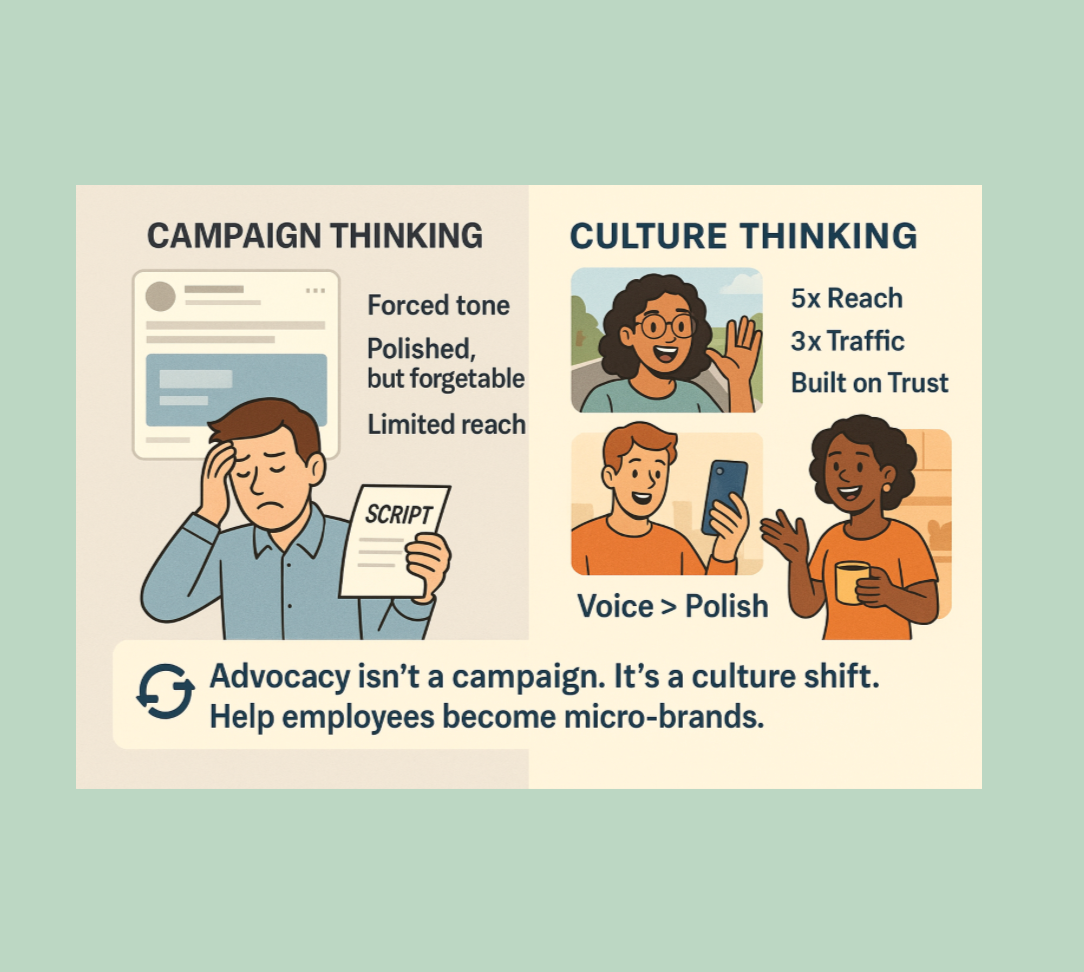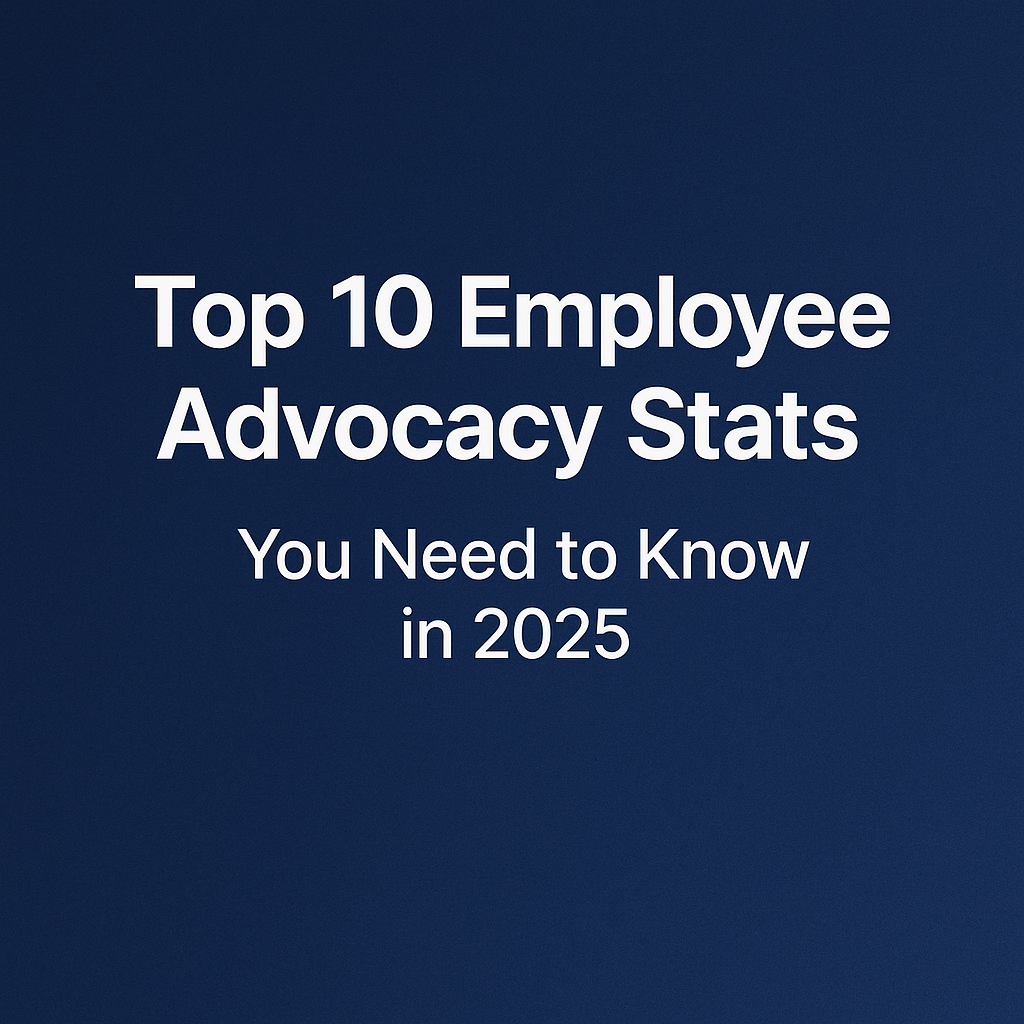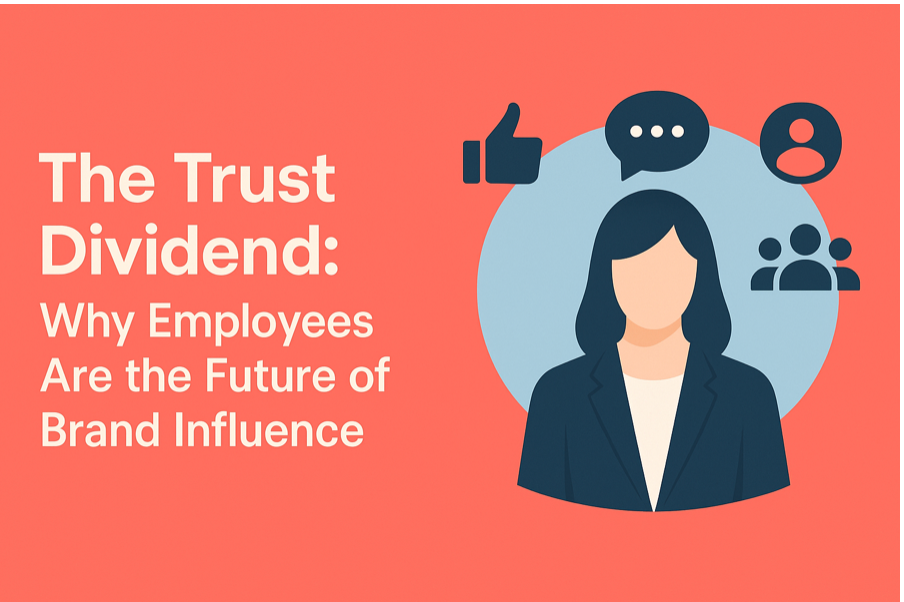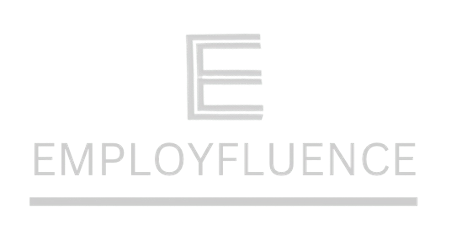Culture Over Campaigns: Why Advocacy Is a Long Game (and How to Win It)

If you're treating employee advocacy like just another content strategy, you're missing the point—and the opportunity.
In today’s world of overproduced ads and influencer fatigue, what stands out is what feels real. Employee voices cut through the noise not because they’re perfect, but because they’re human. And human doesn't scale the way software does.
This is exactly why it works.
We’ve entered a new era where trust is more valuable than reach. And the most underused media channel? Your culture.
The Problem With Campaign Thinking
Marketers love campaigns. They’re scheduled, structured, and easy to track. But employee advocacy doesn’t work like that. It’s not a campaign. It’s a mindset.
You can’t just tell employees to post three times a week and expect results. Instead, you need to create a reason for them to want to share. That shift—from control to culture—is uncomfortable. But it’s also what makes advocacy believable.
“Employee advocacy succeeds because it’s human. And humans don’t scale like software.”
It’s not the perfect video that builds trust. It’s the rough selfie from the company offsite. It’s the spontaneous LinkedIn post after a great client call. These moments aren’t always on-brand, but they’re on-trust. And that’s what matters now.
What Makes Advocacy Stick
To build advocacy that lasts, you need more than just software. You need intention, collaboration, and buy-in across the business.
1. Mindset Over Mandate
Advocacy isn’t an obligation, it’s a mindset. Find the people already sharing naturally and give them space to lead by example.
2. Cross-Functional Buy-In
This isn’t just a job for marketing. HR, internal comms, and leadership all need to align. Advocacy sits at the intersection of culture and communication.
3. Enablement Over Enforcement
Give people the tools and freedom to be themselves online. At Employfluence, we use coaching, prompts, and AI to support—not script—employee voices.
4. Community and Recognition
When advocacy becomes a shared movement, not a solo task, everything changes. Whether it's a Slack channel, spotlight feature, or internal challenge, community keeps momentum alive.
Why the Effort Is Worth It
The numbers speak for themselves
72 percent of consumers trust a company more when employees share content about it (LinkedIn, 2024)
Employee posts generate 4.5 times more engagement than brand accounts
One fintech company reduced recruitment ad spend by 60 percent with just 50 active advocates
A SaaS brand tripled career page traffic without running a single ad
This isn’t about impressions. It’s about trust. And trust drives everything from brand reputation to hiring velocity to customer loyalty.
Final Thought: Advocacy Is Culture. And Culture Is a Strategy.
Employee advocacy isn’t a quick win. It’s a strategic investment in long-term credibility.
You don’t build it with software. You build it with trust, permission, and people. You build it by turning employees into creators, not because you told them to, but because they believe in the company they represent.
So ask yourself
Are we empowering the voices we already have?
Because the brands that win in the next decade won’t be the ones with the biggest ad budget. They’ll be the ones with the most trusted people.
Contact Us
We will get back to you as soon as possible.
Please try again later.



